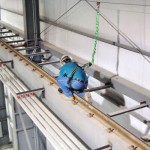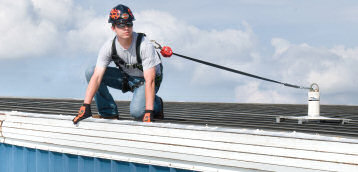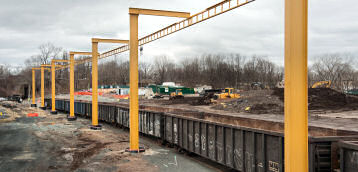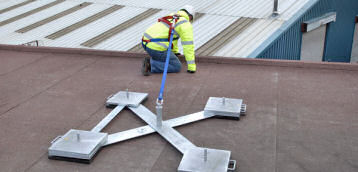Fall Protection Systems Required By OSHA Vary By Purpose and Industry
A Fall Protection System Goes Hand In Hand With A Written Plan Assessing Existing Hazards
 Fall protection systems for fall arrest and restraint and how and where equipment installation is needed are OSHA regulated and at the core of the full turnkey services we provide. They are designed to protect workers and avoid workplace injuries and death and go hand in hand with implementing an effective plan in commercial, industrial and construction workplaces, preceded by making an assessment about existing hazards.
Fall protection systems for fall arrest and restraint and how and where equipment installation is needed are OSHA regulated and at the core of the full turnkey services we provide. They are designed to protect workers and avoid workplace injuries and death and go hand in hand with implementing an effective plan in commercial, industrial and construction workplaces, preceded by making an assessment about existing hazards.
Adopt A Worker-First Philosophy Regardless of OSHA Regulations
OSHA regulations apply to elevations of four feet in general industry workplaces, five feet in shipyards, six feet in the construction industry, and eight feet in longshoring operations, and also when working over dangerous equipment and machinery, regardless of the distance. More is at issue than just equipment installation, and a proper plan should incorporate the following, in order of preference:
1) means to eliminate hazards wherever possible;
2) preventing falls by guarding or restraining workers from access to roof edges or other hazards that cannot be eliminated;
3) arresting falls after they occur; and
4) applying administrative controls and techniques when no other method is possible.
Throughout all of this is the need to properly train workers to enable them to recognize hazards and to safely perform their jobs. Items 2 and 3 are commonly referred to as “fall protection systems”, and a worker-first philosophy should be adopted regardless of OSHA regulations and the height requirement applicable to your industry.
Do You Know What Type of System You Need?
These systems can be broken down into two primary categories:
1) Passive or Collective – Neither special equipment nor active participation on the part of the worker is required. Instead, they work independently of any individual worker and provide protection by restricting access to the hazard. Examples include guardrails, skylight screens, roof hatch covers, and personnel-rated safety nets.
2) Active – Requires the use of personal protective equipment (PPE) by the employee. PPE includes, for example, a full body harness worn by the worker. They also require a means (such as a lanyard or SRL) of connecting the harness to an anchor (such as a horizontal or vertical lifeline or single-point anchor). Because they require the participation of the worker, who might have the wrong equipment, lack proper training, or is fatigued, distracted or otherwise not engaged in the task at hand, active systems are only recommended where the hazard cannot be eliminated, and when it is not possible to use a passive system. They include:
Fall Restraint Systems, in which the worker wears a full body harness and connects to an anchor with an SRL or lanyard that is short enough in length to prevent reaching the edge of the roof or other hazard; and
Fall Arrest Systems, which are the backup plan to catch a worker who has actually fallen, and which should be used only when there is no way the worker can do his job without being exposed to the hazard.
or
dial us at 1-(855) 279-2000
Click on the button above for help and to discuss your needs with one of our experts, or use our quick contact form (feel free to upload drawings or other information that might help us assess your needs).
Anchor Points

Fall Arrest Protection

Fall Restraint Systems


